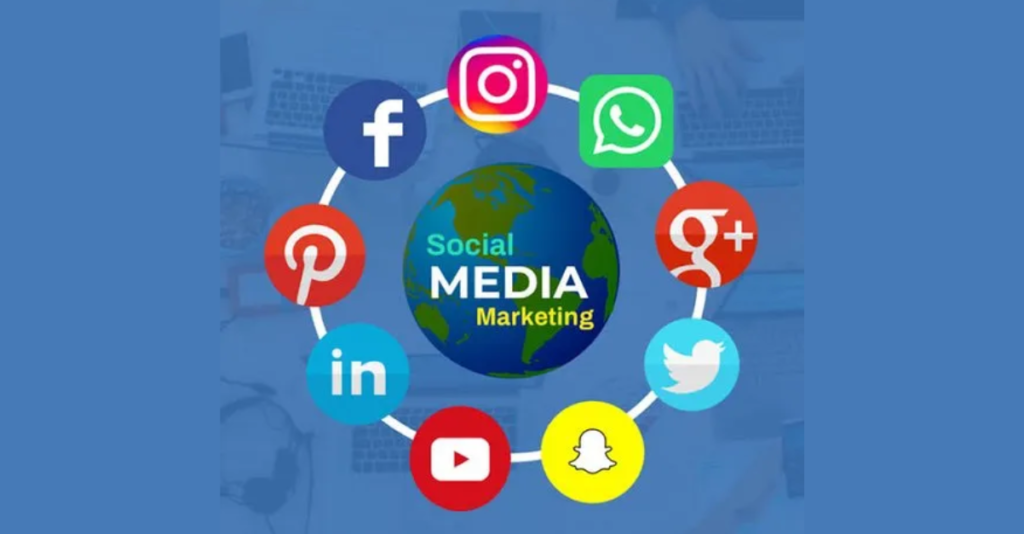Social media marketing (SMM) is one of the most powerful tools businesses use today to connect with customers, increase brand awareness, and drive sales. With billions of people active on platforms like Facebook, Instagram, Twitter, and LinkedIn, social media has become an essential part of digital marketing strategies.
Understanding Social Media Marketing

At its core, social media marketing involves using social media platforms to promote products, services, or brands. Unlike traditional marketing methods, social media marketing allows businesses to interact directly with their audience. It is a two-way communication channel where companies can share content, engage with followers, and receive immediate feedback.
Key Components of Social Media Marketing
Effective social media marketing includes several important elements:
1. Content Creation
Content is the foundation of any successful social media marketing strategy. This includes:
- Text-based posts that inform, educate, or entertain.
- Images and graphics to visually attract users.
- Videos that showcase products, services, or behind-the-scenes moments.
- Infographics that present data in an engaging way.
Consistently posting high-quality content helps businesses stay relevant and keeps their audience engaged.
2. Audience Engagement
Engagement refers to how businesses interact with their followers. This includes responding to comments, answering messages, and participating in discussions. When businesses actively engage with their audience, it builds trust and strengthens customer relationships.
3. Advertising on Social Media
Many social media platforms offer paid advertising options that allow businesses to target specific audiences. Ads can be customized based on location, age, interests, and online behavior. Popular social media ad formats include:
- Sponsored posts on Facebook and Instagram.
- Video ads on YouTube.
- Promoted tweets on Twitter.
- LinkedIn ads for professional networking.
Paid advertising helps businesses reach new potential customers beyond their organic followers.
4. Analytics and Performance Tracking
Tracking and analyzing performance is crucial to improving a social media strategy. Platforms like Facebook Insights, Instagram Analytics, and Twitter Analytics provide data on:
- How many people viewed a post.
- How many engaged with the content (likes, shares, comments).
- What type of content performs best.
By analyzing these insights, businesses can refine their strategies for better results.
Benefits of Social Media Marketing

Social media marketing offers several advantages over traditional marketing methods.
1. Cost-Effective Marketing
Creating an account on most social media platforms is free. Even paid advertising on social media is often more affordable than traditional media like TV or print.
2. Precise Audience Targeting
Unlike traditional marketing, which reaches a broad audience, social media marketing allows businesses to target specific demographics based on interests, behavior, and preferences.
3. Increased Brand Awareness
Regularly posting content helps businesses stay in the minds of their customers. The more people see a brand online, the more likely they are to remember it.
4. Direct Customer Interaction
Social media allows businesses to communicate directly with customers, answer questions, and resolve issues in real time. This improves customer satisfaction and loyalty.
5. Valuable Market Insights
Social media provides businesses with insights into customer preferences and trends. By monitoring social media conversations, businesses can understand what their audience wants and adjust their strategies accordingly.
Challenges of Social Media Marketing
While social media marketing has many advantages, it also comes with challenges.
1. Time-Consuming
Maintaining an active social media presence requires continuous effort. Creating content, responding to comments, and analyzing data can be time-intensive.
2. Changing Algorithms
Social media platforms frequently change their algorithms, which affects how content is displayed. Businesses must adapt their strategies to maintain visibility.
3. Handling Negative Feedback
Not all social media interactions are positive. Businesses must be prepared to handle negative comments, complaints, and criticism in a professional manner.
Real-Life Example: The Power of Social Media

One of the best examples of social media marketing’s impact is the case of Easy Street Burgers, a restaurant in Los Angeles. In October 2023, TikTok influencer Keith Lee reviewed their burgers and gave them a perfect rating. The next day, the restaurant saw massive foot traffic, with lines around the block. This case highlights how social media can instantly boost business success when used effectively.
Conclusion
Social media marketing is a game-changer for businesses in today’s digital world. With the right strategy, it can help brands increase visibility, engage with customers, and drive sales. However, businesses must stay updated on trends, adapt to changing algorithms, and manage their social media presence actively.
For those new to social media marketing, the key takeaway is simple: create valuable content, engage with your audience, track performance, and continuously refine your strategy. With dedication and creativity, social media can become a powerful tool for business growth.
